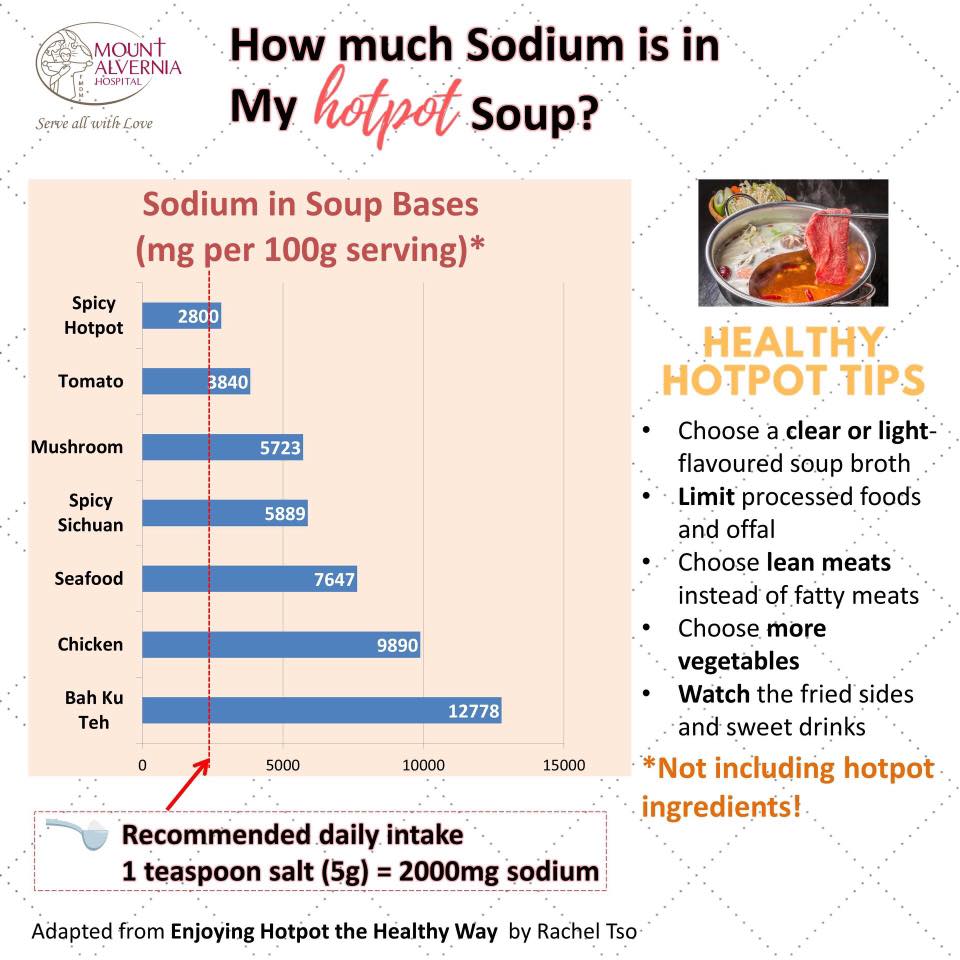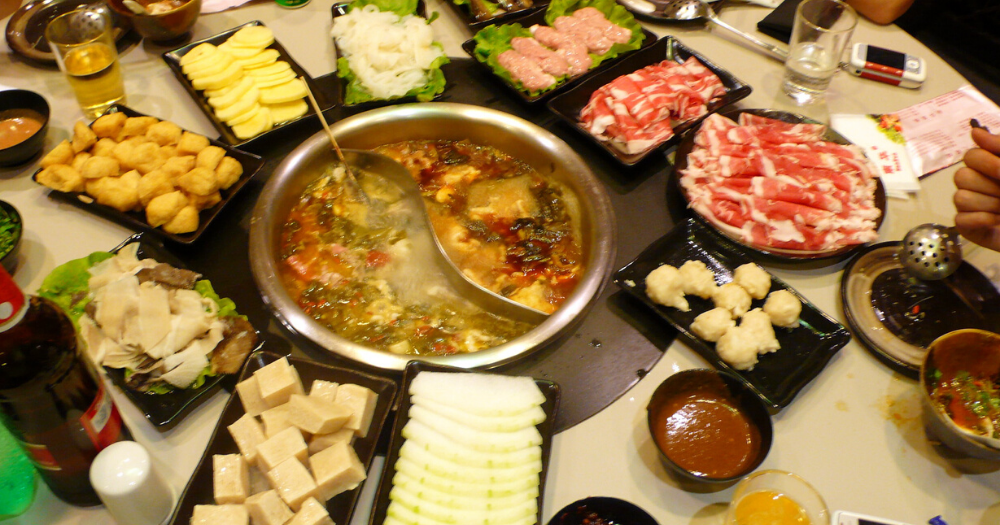Chinese New Year means snacking on festive goodies and indulging in hotpot reunion dinners.
Hotpots might come across as a quick and filling alternative to some meals, especially for large groups.
The wide range of ingredients might give you the impression that it can be nutritious too but it seems like that's not always the case.
High sodium content for common broths
A dietician from Mount Alvernia Hospital, Rachel Tso, recently came forward with an advisory on hotpot consumption.
More often than not, hotpots can be unhealthy due to the high-sodium and high-fat content in the broth.
The recommended daily intake of sodium is 2,000mg per day. This is equivalent to one teaspoon of salt.
Hotpot broths, however, typically have a sodium content of 7,000mg per serving. That's more than three times the recommended amount daily.
Here's a breakdown of the sodium content of each type of hotpot broth, all of which exceeds the ideal daily sodium intake.
 Table from Mount Alvernia Hospital
Table from Mount Alvernia Hospital
Chicken and Bak Kut Teh broths have the highest sodium content, while spicy and laksa broths seem to have the lowest.
This doesn't mean that chilli lovers get off scot-free though.
According to Tso, spicy broths are high in fat as well, due to the large amounts of oil inside.
Coconut milk in laksa broths contributes to the fat content too, while broths that are based on offal or fatty meats like pigs broth soup can raise the saturated fat content of the meal.
Ingredients matter too
How healthy your hotpot is also depends on the ingredients you add.
Meatballs, luncheon meat and hotdogs are processed foods which contain a lot of sodium, even more so when they are cooked and dipped in salty broth.
Fatty meats like pork belly and shabu-shabu are high in calories and fat too.
For example, a 50g serving of pork belly has 230 calories and 20g fat which is equivalent to a curry puff.
If you're worried about your health, you can choose low-calorie ingredients like vegetables, fish, chicken and tofu.
Consuming excessive sodium increases the risk of high blood pressure, heart disease, kidney failure and stroke.
How to eat hotpot healthily?
That said, one can still enjoy hotpot guilt-free by choosing a healthier version or eating in moderation.
Mount Alvernia recommends people to limit their hotpot meals to once or twice a month.
If this might seem too impossible, just switch to healthier clear broths and fresh ingredients, and you can have hotpot more frequently.
Here are some other useful tips:
- Choose a clear or light-flavoured soup to cook your ingredients, such as cabbage or mushroom soup.
- Limit your intake of broth.
- Base your hotpot meal on vegetables.
- Watch the fried sides and sweet drinks. Choose non-fried sides and unsweetened drinks such as water.
- Go easy on the dipping sauces. Avoid deep-fried garlic and oil-based sauces such as chilli oil or sesame oil.
- Ensure your ingredients like meat are fully cooked to prevent food poisoning.
Here's a nifty graphic by Mount Alvernia that you can check out.
 Photo from Mount Alvernia Hospital / FB
Photo from Mount Alvernia Hospital / FB
Top photo from Christopher / Flickr
Content that keeps Mothership.sg going
✈️?
We compiled a list of flight and food promos for you
??
Instant $88 lucky draw to get cashback for your CNY clothes
??
$1.50 unagi sushi?!? Don't say we bojio
??
Technology can be scary for older folks, but it doesn’t have to be.
If you like what you read, follow us on Facebook, Instagram, Twitter and Telegram to get the latest updates.
